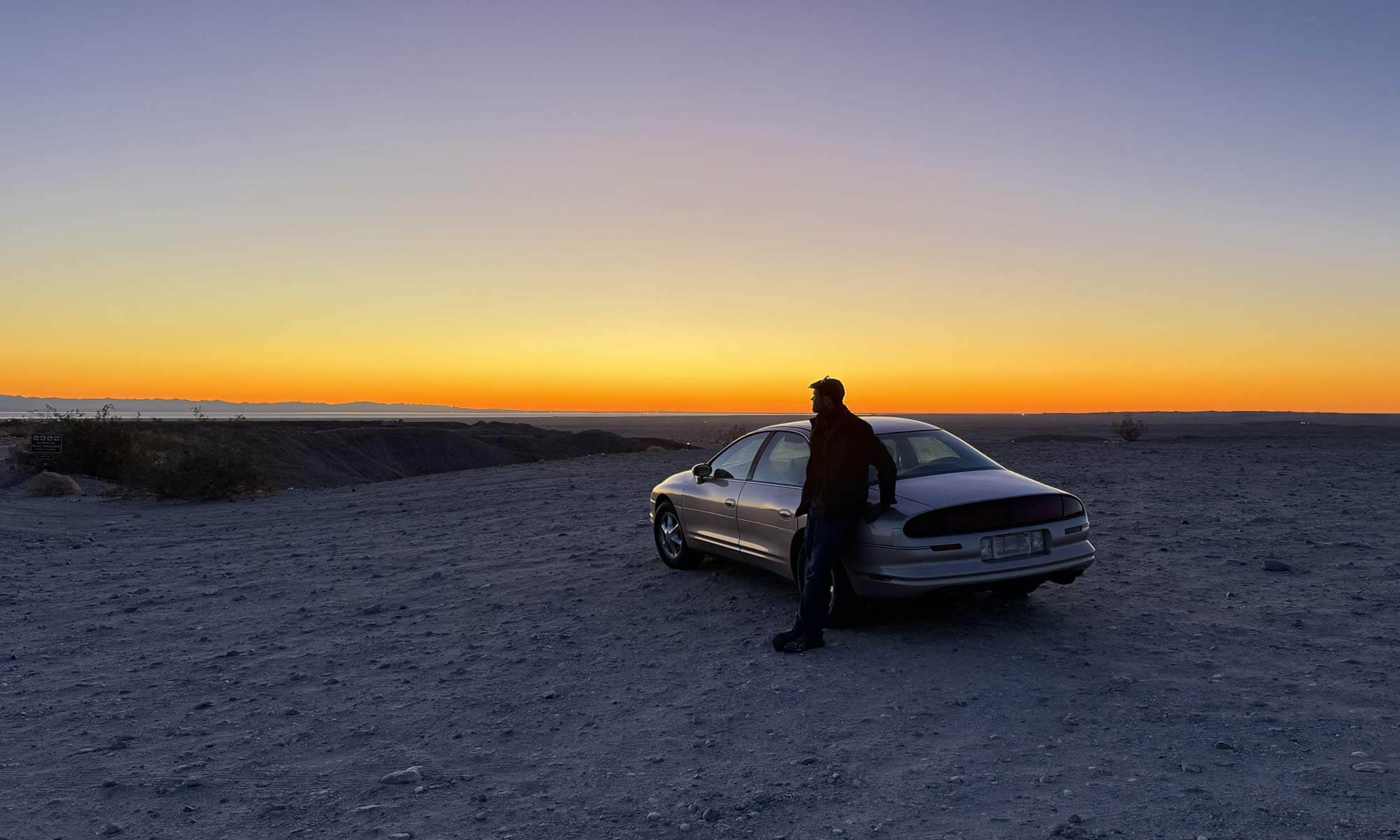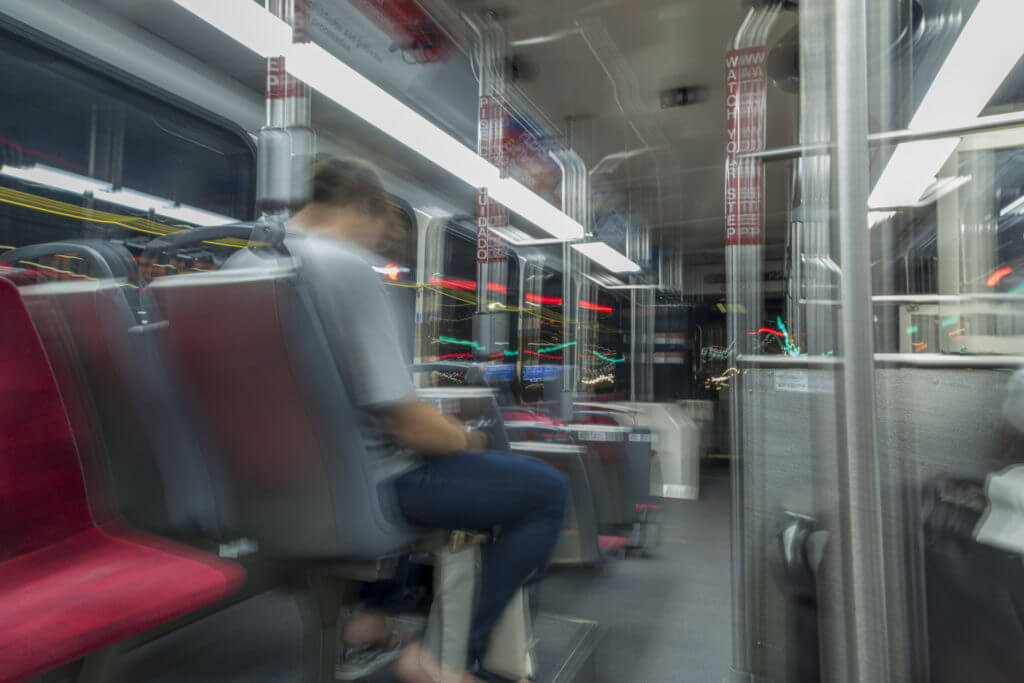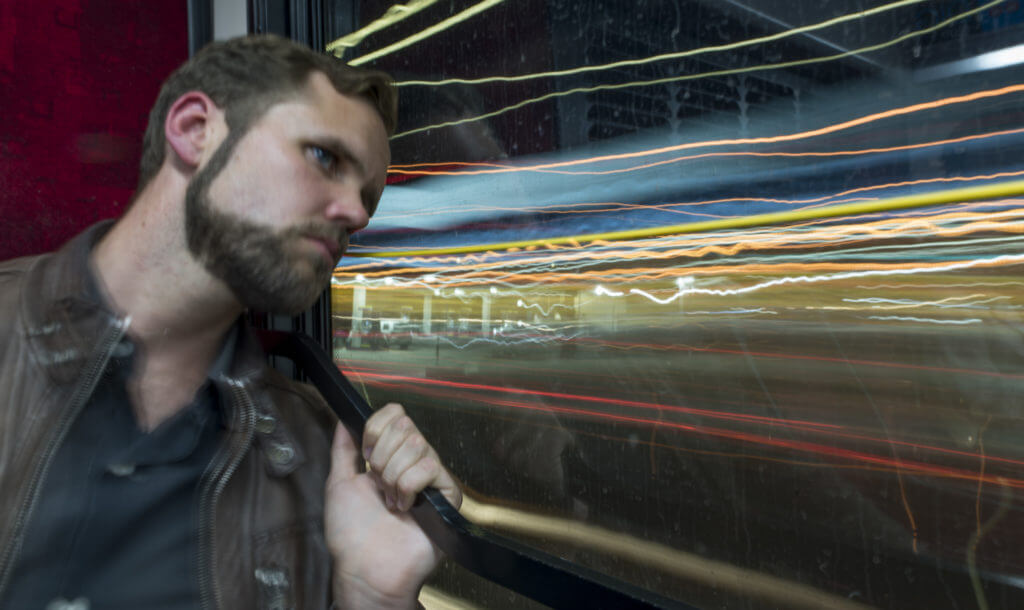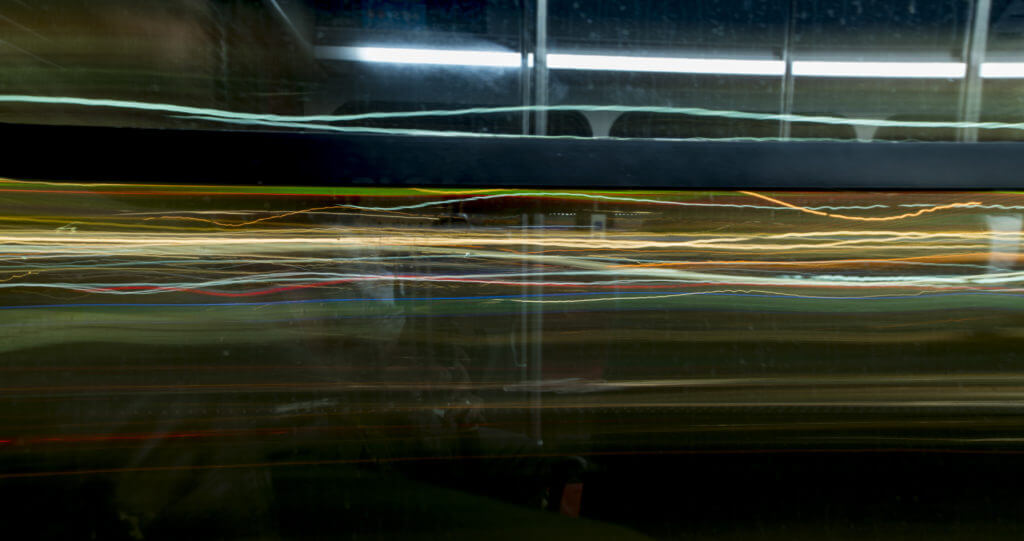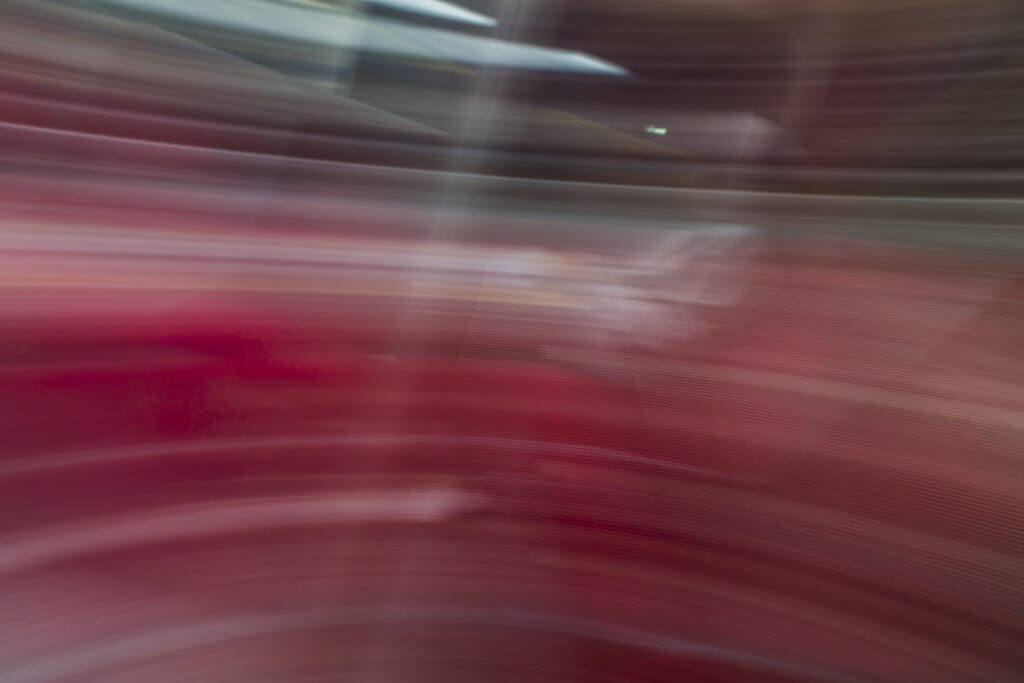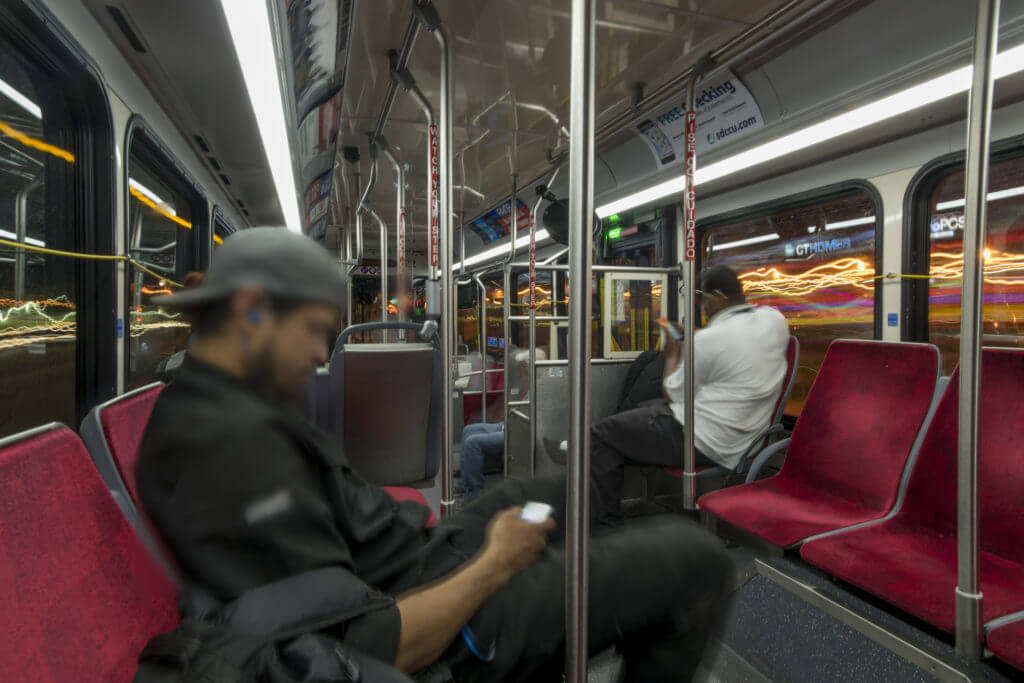You’re sitting on the bus one early spring evening. It’s going to be a long-ish ride: 90 minutes. Time enough to make it through a few chapters in your book, or perhaps to compose a love letter to your sweetie using your smartphone. What’s that? You don’t have a book? AND your smartphone is sitting at 2% battery life? Oh no! What to do?
If you’re a photographer, you’ll take the opportunity to reach into your bag (backpack) of tricks (gear) and grab your light-tight box with chunks of glass sticking out of it (camera) to take some photos. In this particular case, it’s a Nikon D810 with a Zeiss 21mm f2.8 lens, courtesy of Borrowlenses.
Curiosity strikes as you wonder how a low-ISO, long exposure might look on this bus. Setting up your “compact” tripod that just barely fits in your backpack, you align your first shot.
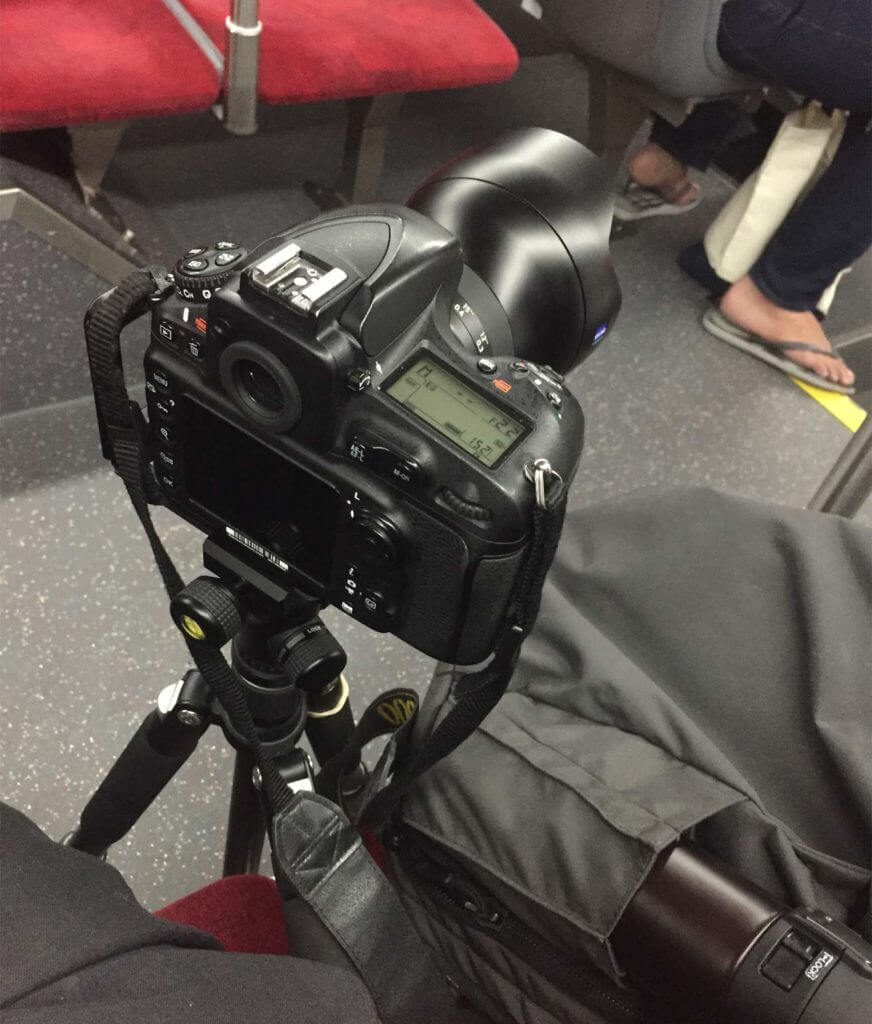
Dial down the f-stop to f22, the ISO to LOW 3 (actually ISO 31, according to the EXIF info), and the exposure duration to T Mode. It’s time for the inaugural press of the shutter. Now: we wait…
And wait…
And then just a bit more waiting…
You press the shutter to end the exposure, 77 seconds later. And the resulting photo?
It’s not without it’s charms. As a test, it’s a successful failure. What happens when you turn the camera 180 degrees and record a subject who is aware of the camera and can try to hold as still as possible for the exposure duration? Well, you’re about to find out!
A few things can be learned from these two experiments.
- Long exposures on a bus mean an overall lack of clarity, even with a tripod. All those vibrations are translating right up the tripod legs and into the camera.
- An aperture of f22 mean smaller points of light, which means more opportunity for distinct light trails.
- It’s not easy to hold an expression for 30+ seconds. Ever wonder why nobody smiled in photos from 1860? Those were multiple-minute exposures; they weren’t sad, they just didn’t want to sprain a cheek bone.
Now then, you decide to eschew a human subject and just see what happens when you point the camera out the window. Same settings as before, about a 30 second exposure.
The bus’ up-and-down motions give these lights a little bit of a wave pattern. Interestingly, there are no LED lights visible in this photo. They’re most readily identified in long exposures by the fact that they look like dotted lines, instead of continuous ones.
Time to try something totally different. You’ve got your camera angled downward slightly and you release the pan-lock lever on your tripod. Now, if you leave the camera to its own devices, it will gradually list downward as gravity exerts its immutable forces on it. What happens when a considerably-shorter exposure is used and the camera just does its thing?
At first glance, not much to see here. But wait! There’s a person visible in this shot! In fact, they’re the demarcation point for the interesting non-red parts of the photo. Her shoes form a white streak that leads off to the left, as does the book sitting on her lap. This simultaneously a double exposure AND and long exposure!
Let’s close this experiment by taking one final shot. Still using your tripod, you point the camera straight down the aisle to the front window. Re-enable T-mode and set the focus to hyperfocal for maximum focus. CLICK!
Take a look at those lights outside the window on the right. They’re doing that same wave-thing as the earlier shot. This is a visual record of the bus’ various rocking back and forth as it passed by the lights from store windows. Flashbacks to the Wonka boat-ride scene abound.
This is a 16-second exposure while the bus travels fairly-smooth streets, coming to a stop at a stop light for the last 5 seconds of the exposure. These factors, coupled with the fact that the tripod is essentially part of the bus, contribute to an overall sharpness in the bus’ interior. (Living) humans aren’t that great at remaining rigid for extended periods of time, so they’re a little fuzzy.
The light streaks outside the window are courtesy of the Pacific Beach business district. The bus’ pause at the stop light gave the buildings’ signs just long enough to register on the exposure too. CT Homes got some free promotion this evening.
Before you know it, you’re at your destination. It’s time to get off the bus and go make a blog post. 🙂
Suggested Articles:
